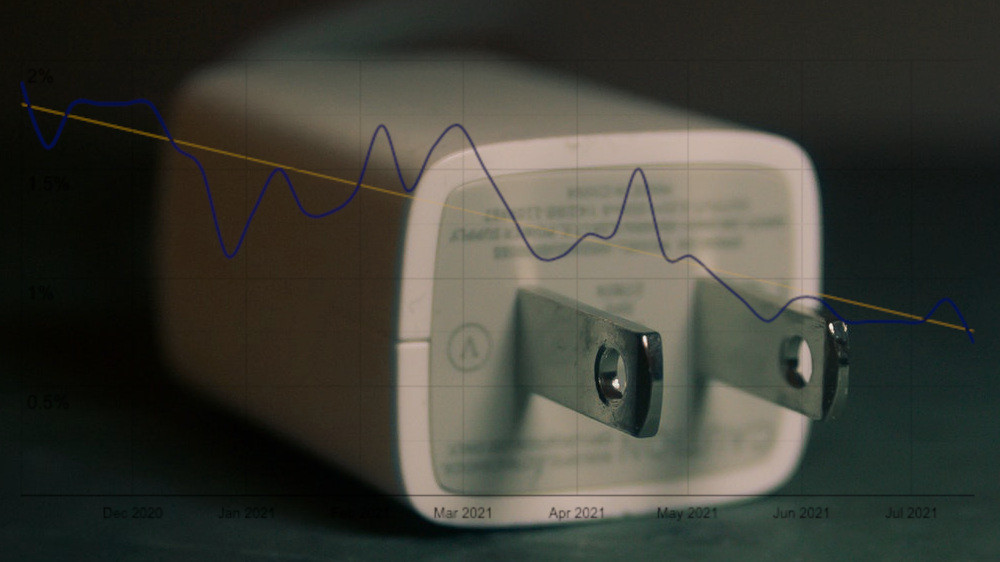Many plugins in the WordPress.org repository have shown a significant drop in active install growth this year.
Along with some other people, I have been intensely watching the active install growth charts on the WordPress.org plugin repository for a variety of plugins for the past few months. Since I’m involved with several different plugins to various degrees (mainly Envira Gallery Lite, NextGen Gallery, and Soliloquy Lite) this project started out of curiosity and self-interest.
Monitoring these plugins and others off and on over the past year — since the early days of the pandemic — often we could see stable growth and more than a few times respectable gains in the active install statistics on WordPess.org. However, since about May or early June, the overall trends for some of the most popular and well-known plugins’ “active install growth” (as reported by WordPress.org) are pointing generally downward — growth is in decline. In some plugins we see negative percentages, which seems to suggest the plugins are being removed from WordPress sites.
In addition to my own, the following plugins are the ones I focused on, and most of these exist under the “most popular” category on WordPress.org:
- Jetpack
- Yoast SEO
- Elementor
- Classic Editor
- WooCommerce
- WPForms
- Monster Insights
- Contact Form 7
- Advanced Custom Fields
- Regenerate Thumbnails
- Google Site Kit
- Yoast Duplicate Post
- OptinMonster
- Ninja Forms
- Rank Math
- Envira Gallery
“I doubt the explanation for the decline of active installs is single and simple.”
David Bisset
These plugins represent a diverse group from the plugin repository. Some are small plugins that do one job, others are the free version of a plugin that offers a commercial version. They range from developer-favored plugins to ones almost anyone with a new WordPress site would be likely to install.
Of course, exact numbers and the hills and valleys of active install stats differ from plugin to plugin. But overall, if you look at charts as a whole you’ll see a general dropoff around the month of April. Some drop into negative territory, and others don’t. Some have had peaks since that time, but the trend appears to be less or negative growth since April compared to the first three months of 2021.
I will note some of these plugins are seeing slight upticks very recently, but it’s too soon to tell what that might mean.
I reached out to Iain Poulson, who recently sold Plugin Rank to Awesome Motive and who keeps track of plugin trends with his WP Trends newsletter. Iain has more experience, knowledge, and data than me so I thought I would ask him about the apparent downward trend in active installs.
According to Iain, growth for plugins found in WordPress.org’s “Popular” category (at least the ones I sampled) seems to be generally up for the first half of 2021 versus the first half of 2020. Despite a slight dip in March and April 2021, these plugins are growing. That isn’t surprising as they are popular plugins for a reason. The WordPress.org plugin directory search algorithm makes plugins with large active install numbers feature higher in search results than others, which to some degree perpetuates their popularity.
However, taking additional data into account by looking at over 1000 plugins for the same period, overall there does seem to be a dip from March to May 2021. This confirms what we have been seeing in the charts on WordPress.org.

What Does This Mean?
Since WordPress itself experienced growth that hasn’t slowed since last year, what is driving these active plugin installation numbers down suddenly? Assuming the statistical reporting itself hasn’t changed, it is an unprecedented trend.
I doubt the explanation for the decline of active installs is single and simple. But since this is happening to a wide variety of plugins, Iain and the other people I shared my observations with had at least one common theory that makes sense: this is a reaction to the huge amount of growth we saw last year.
As Iain put it, “I think it is more that the growth was higher when everyone was building sites and taking everything online during the pandemic, and this is the inevitable decline in growth.”
“[G]rowth was higher when everyone was building sites and taking everything online during the pandemic, and this is the inevitable decline in growth.”
Iain Poulson
In terms of sales, I have (in confidence) reached out to some WordPress plugin developers that mostly do not have plugins in the “Popular Plugins” category in the repo. They have acknowledged that their overall sales are matching the recent trends. Sales have been in decline. There are not enough data points to be conclusive, so I would be very open to talking with other business owners of pro plugins and services what they have seen in the last three months. Contact me on Slack or via the Post Status form.
With vaccinations and restrictions being lifted, people are starting to get out more which might lead to less time with business and personal projects.
There’s no reason to panic but plugin authors and business owners should be aware of the trend and keep an eye on it. I think the sudden dip is what caught my (and others) eye. While noteworthy the ecosystem could be “adjusting” as other industries are going through similar trends.
It’s clear that WordPress itself continues to grow and along with it the community is strong, thriving, and getting more so by the day. Active install numbers are just one metric. It will be interesting to see where that metric goes in the next few months — will this prove to be simply a reversion to the mean after the boom of 2020.
Bottom Line: If you a small business or a solo developer with plugins that have a small user base, you might be feeling a dip right now this year than the bigger and “more popular” plugins.





